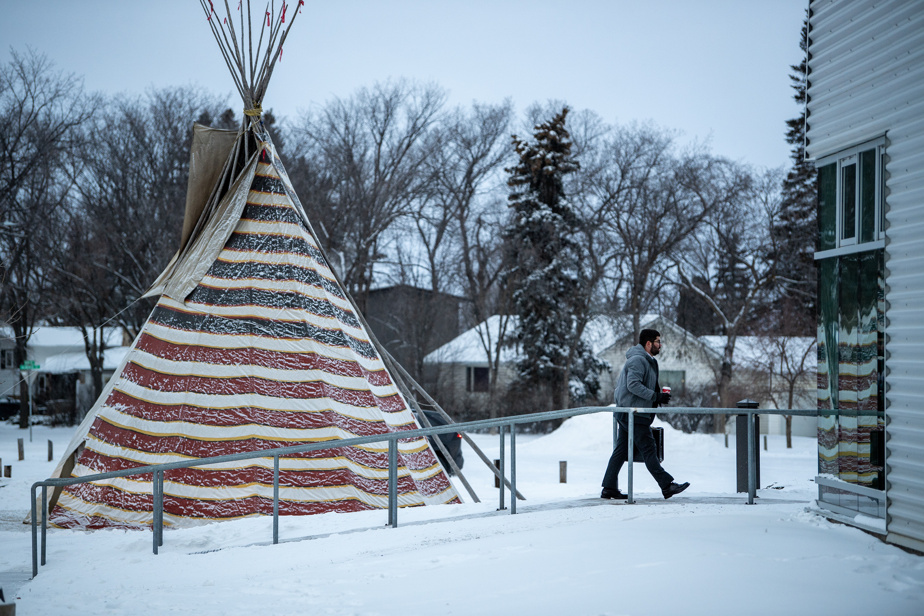(Melfort) The man who went on a stabbing rampage against a Saskatchewan First Nation was not on the radar of the province’s specialized team before the massacre.
Myles Sanderson was unlawfully at large when he killed 11 people and injured 17 others on the James Smith Cree Nation and neighboring community of Weldon, northeast of Saskatoon, on September 4, 2022.
He died in police custody a few days later.
A warrant for Sanderson’s arrest had been issued a few months earlier by Saskatoon police, Staff Sergeant Ryan How of the Royal Canadian Mounted Police (RCMP) Police Response Team said Monday. of Saskatchewan, during the coroner’s inquest.
The response team was not looking for him specifically, Mr How said.
Sanderson was released on statutory release in August 2021, after his first federal prison sentence. Four months later, he was found to have lied about his living conditions and his release was suspended. In February 2022, the parole board overturned this suspension and Sanderson was again released on statutory release with reprimand. In May of that year, he was found to be unlawfully at large.
“It’s been a long time,” Chief Calvin Sanderson of the Chakastaypasin First Nation, one of the three communities that make up James Smith, said outside the investigation. “The leaders were not contacted by the municipal police, nor by an alarm signal or anything like that. »
Ryan How said 52 other people were illegally at large in Saskatchewan on the day of the massacre. There were 5,468 people with outstanding arrest warrants.
The response team was created five months before the murders. It is made up of the RCMP Crime Reduction Team, an Execution Warrant Disposal Team and the Saskatchewan Substance Trafficking Response Team.
Mr. How clarified that the mandate of the response team is to tackle the greatest threats to public safety.
Sanderson, before the massacre, probably would not have been on his radar, Mr How added. He had a long criminal record, but unfortunately that is not uncommon among people the team is looking for, the officer said.
When it became clear there had been a massacre, How said, the team focused on the case. He was a member of the team who arrested Sanderson days after the attacks.
Many psychopathic traits
The investigation, now in its second week in Melfort, Saskatchewan, aims to establish the events leading up to the murders, who died, and when and where each person was killed. The jury, made up of six people, can also make recommendations to prevent similar deaths.
A second inquest into Sanderson’s death is scheduled for February.
The investigation revealed that Sanderson had a history of violence and incarceration. His criminal history included 59 convictions as an adult; 35 of them were for failure to appear in court.
His common-law wife, Vanessa Burns, testified to approximately 14 years of domestic violence at the hands of the father of her five children. She said Sanderson attacked her several times while she was pregnant.
Criminal investigations psychologist Matt Logan told the inquest last week that Sanderson had many psychopathic traits.
Drawing on court and prison records, as well as community members, Mr. Logan described Sanderson as having had an unstable childhood marked by abuse. Sanderson struggled with alcohol addiction and used methamphetamine and cocaine.
RCMP said in an overview of the massacre that Sanderson went to the First Nation to sell cocaine. In the days before the murders, he had caused chaos with his brother, Damien Sanderson.
Damien Sanderson was the first to be killed. Myles Sanderson then went door to door to the First Nation, stabbing and killing people.
An RCMP criminal profiler said some victims were targeted because Sanderson believed they were associated with a gang while others got in his way.
Emergency services questioned
Sherri Julé, director of emergency medical services in northern Saskatchewan, told the inquest Monday that an ambulance had gone to a home to treat a stabbing victim, but other medical vehicles from emergency had gone to the band office.
“There were a lot of patients, especially at the beginning, [et] there weren’t many paramedics there,” M saidme Jule.
She explained a call came in at 5:44 a.m. saying paramedics might be needed at the First Nation, according to the investigation. A Melfort ambulance was dispatched 17 seconds later and arrived at the First Nation at 6:23 a.m. Three people, two of whom were seriously injured, arrived at Melfort Hospital at 8:17 a.m.
Shortly after this first call, the investigation revealed that there had clearly been many injuries and that the killer was at large.
Sherri Julé said ambulances were stationed at the band office, where police and a conservation officer could provide security.
“ [Les ambulanciers] felt very safe because of the presence of the police,” she said, adding that the injured were taken to the band office by community members or officers.
Mme Julé said all three STARS air ambulances in Saskatchewan responded. Ambulances were sent from Melfort, Tisdale and Prince Albert.
Sixteen patients were treated, she said, and all survived.
